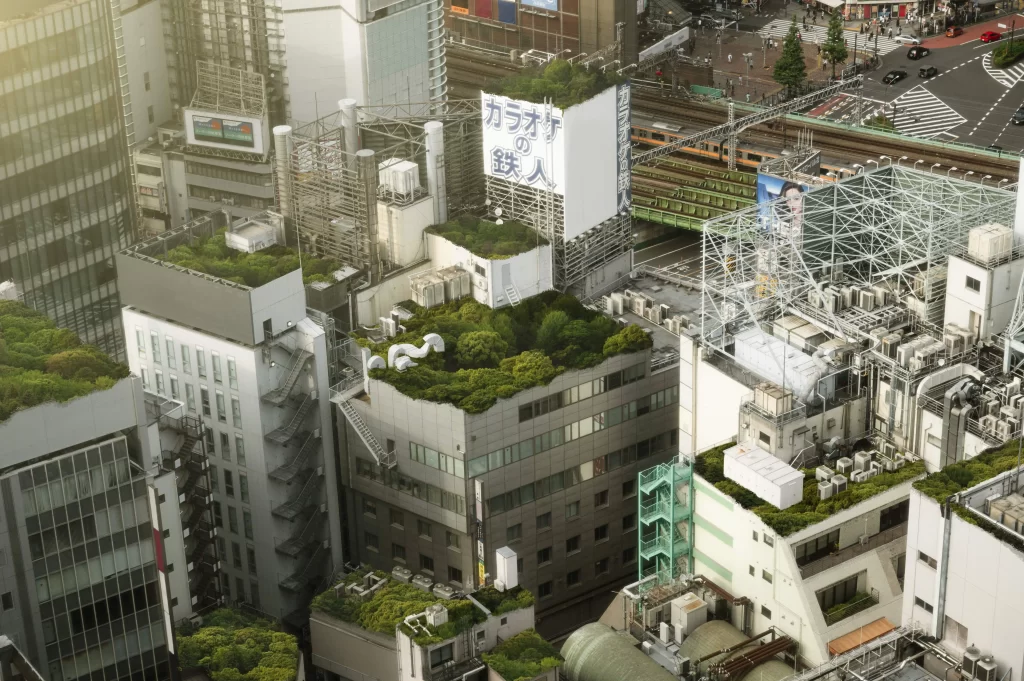In the pursuit of green buildings, prioritizing recycled, reusable, non-toxic, and renewable materials such as bamboo and straw is paramount. Alongside material choices, innovative structural and design approaches are essential for achieving sustainability goals. At the forefront of this movement is the Green Building Council, a national-level independent non-profit organization. Charged with overseeing the adoption and implementation of green building standards, the Council offers a rigorous green building rating system and certification process. Join us as we delve deeper into the journey towards greener, more environmentally-conscious construction practices.
What Are Green Buildings?
Green buildings are environmentally friendly and use resources wisely throughout their entire lifespan. They aim to reduce harm to the environment and make life better for people inside.
These buildings are designed, built, operated, and maintained in a way that makes the most of natural resources like sunlight and wind. They also use technologies that don’t harm the environment much, like solar panels.
Green buildings focus on using energy, water, and other resources efficiently. They also pay attention to making the inside air clean and comfortable for people. Overall, they try to be kind to nature and people.
A Brief History of Green Buildings
In the 1960s, people started talking about ecological architecture. Then, in the 1970s, when there was an energy crisis, they began looking for ways to use renewable energy like solar and wind power. By 1980, the idea of “sustainable development” was catching on, and some countries were starting to make buildings that used less energy.
In 1990, the United Kingdom made the world’s first green building standard. Not long after, in 1993, the U.S. Green Building Council was formed. They created the Leadership in Energy and Environmental Design (LEED) rating system to check if buildings were green.
Why Green Buildings Are Important
Buildings use a lot of energy and electricity. They use about 40% of the energy in the United States! And they make a big chunk of the pollution that causes climate change. So, making buildings greener is super important to save energy and protect the environment.
Green buildings use lots of different ideas to save energy and water. They might use solar panels to make electricity or special designs to let in more natural light. Some even have plants on the roof to help keep things cool and clean up rainwater.
Green Building Practices
Green buildings use all kinds of tricks to save energy and water. They might use solar power or special designs that let in more natural light. Some even have plants on the roof to help keep things cool and clean up rainwater.
Lots of buildings get checked to see if they’re green. One big program is called LEED, and it gives out certificates to buildings that are good at saving energy and resources. There are thousands of these green buildings around the world, mostly in big cities. Other countries have their programs too, all working to make buildings greener and better for everyone.
How to Make Buildings Green: Steps Towards Sustainability
Selection of Sustainable Materials
Green buildings prioritize the use of sustainable materials that can be renewed, recycled, or reused. Materials like bamboo and straw, which are non-toxic and have minimal environmental impact, are favored over traditional building materials.
Structural Innovation for Sustainability
Architects and designers worldwide are innovating to create more sustainable buildings. This includes designs with ample natural light and ventilation, achieved through large windows and open spaces. Additionally, integrating features like rainwater harvesting systems enhances water conservation in both residential and commercial buildings.
Integration of Building-Integrated Photovoltaics (BiPV)
Building-integrated photovoltaics (BiPV) revolutionize sustainable goals by incorporating solar panels directly into building structures during construction. This allows buildings to generate their electricity, reducing their reliance on the main power grid. By curbing the expansion of traditional electricity networks, BiPV helps mitigate greenhouse gas emissions and promote sustainability.
State-of-the-Art Technology Integration
The fusion of architecture and technology, known as ArchiTech, plays a crucial role in advancing green construction. Innovative technological solutions such as Building Information Modeling (BIM), Building Management Systems (BMS), and Integrated Building Management Systems (IBMS) are transforming the construction industry. These technologies facilitate better decarbonization, enhanced eco-friendliness, and improved energy efficiency in buildings.
Towards a Greener Planet Through Collective Responsibility
Public-Private Partnership for Sustainable Solutions
Achieving carbon neutrality and reversing environmental damage requires a joint effort from both the public and private sectors. Collaboration between governments and businesses is essential to develop sustainable design and building solutions that minimize harm to the environment.
Government Initiatives for Green Building
Federal and local governments, including city councils, play a vital role in promoting green building principles at the administrative level. It is their responsibility to establish frameworks for green building standards, aligning with sustainable development goals.
Individual Responsibility for Eco-Friendly Practices
Individuals have a significant role in adopting eco-friendly practices. Real change occurs when people advocate for green building concepts in their homes and communities, driving widespread adoption of sustainable practices.
World Green Building Council: Driving Global Change
The World Green Building Council, a member of the United Nations Global Compact, serves as a global network of over 70 national-level Green Building Councils. It oversees the implementation of green building standards worldwide, striving to transform the building and construction sectors through sustainable practices.
Mission for Sustainable Transformation
The council is dedicated to optimizing existing practices in the building sector with sustainable construction methods. Its mission includes promoting climate action, improving health and quality of life, and ensuring equitable resource distribution through collaborative research and stakeholder engagement.
Partnerships for Global Impact
In collaboration with organizations like the World Bank, the World Green Building Council is expanding its reach to developing countries and emerging markets. Programs such as the Excellence in Design for Greater Efficiencies (EDGE) Market Transformation Program aim to promote green building concepts and certification, driving sustainable development on a global scale.
To be classified as a green building, a structure must adhere to stringent criteria, utilizing recyclable and renewable materials while optimizing energy and water efficiency. Given the construction sector’s significant contribution to greenhouse gas emissions, embracing green building practices offers a promising avenue for reducing carbon footprints. However, achieving this objective necessitates collaborative efforts between public and private entities, alongside strategic investments and policy reforms. For those interested in sustainable projects globally, our comprehensive project tracker provides the latest updates on ongoing and upcoming construction endeavors, facilitating engagement for contractors, engineers, designers, and construction professionals alike. Moreover, SRMPR Cements stands out as a preferred choice, exemplifying a commitment to sustainability through environmentally responsible practices, quality assurance, innovation, customer satisfaction, and industry leadership in driving positive change within the construction sector.



